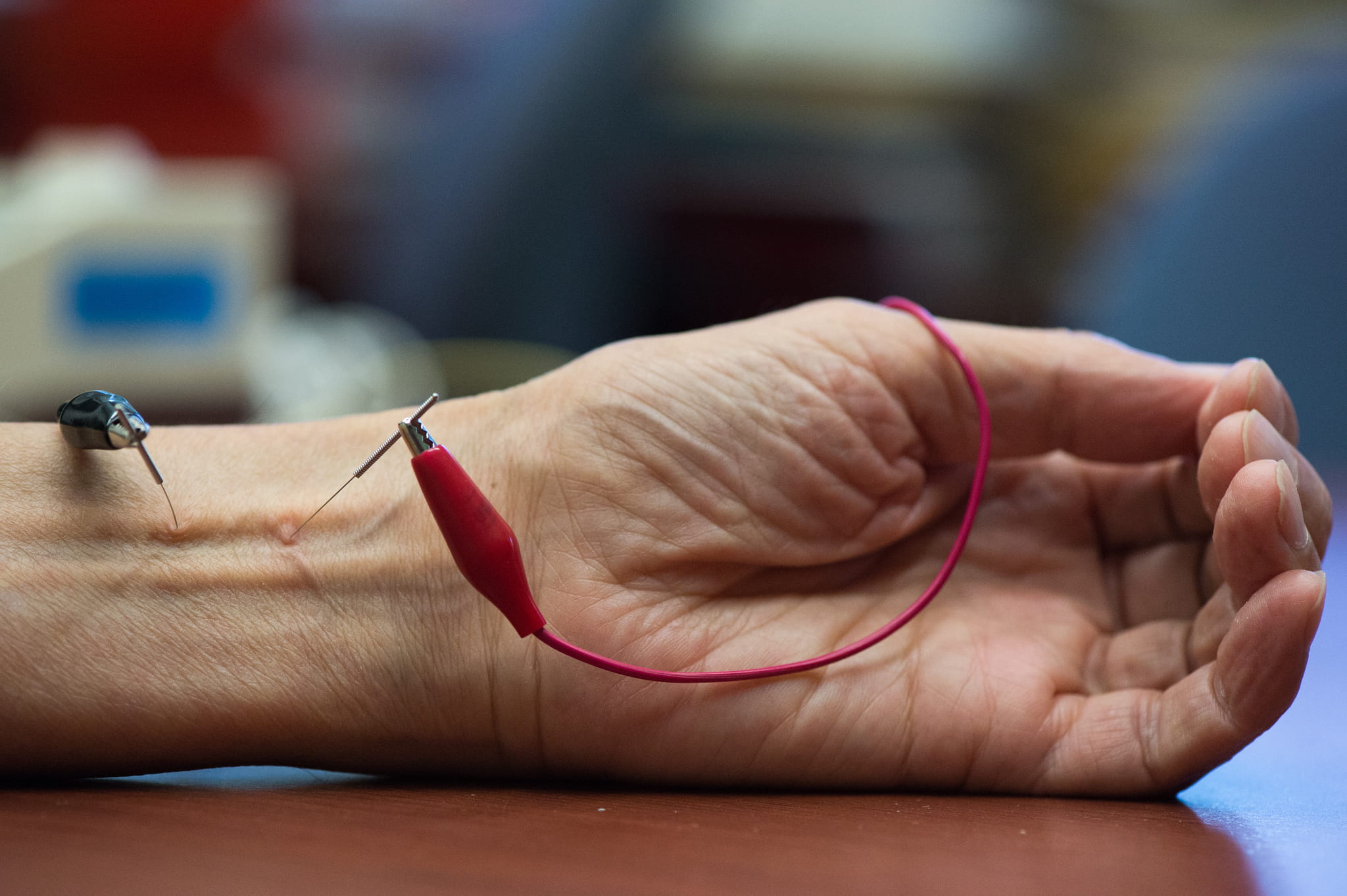Hypertensive patients benefit from acupuncture treatments, UCI study finds
Ancient Chinese practice lowers blood pressure, may lessen stroke, heart disease risks

Irvine, Calif., Aug. 19, 2015 — Patients with hypertension treated with acupuncture experienced drops in their blood pressure that lasted up to a month and a half, researchers with the Susan Samueli Center for Integrative Medicine have found.
Their work is the first to scientifically confirm that this ancient Chinese practice is beneficial in treating mild to moderate hypertension, and it indicates that regular use could help people control their blood pressure and lessen their risk of stroke and heart disease.
“This clinical study is the culmination of more than a decade of bench research in this area,” said Dr. John Longhurst, a University of California, Irvine cardiologist and former director of the Samueli Center. “By using Western scientific rigor to validate an ancient Eastern therapy, we feel we have integrated Chinese and Western medicine and provided a beneficial guideline for treating a disease that affects millions in the U.S.”
Longhurst and his UCI colleagues Dr. Peng Li and Stephanie Tjen-A-Looi conducted tests on 65 hypertensive patients who were not receiving any hypertension medication. Separated randomly into two groups, the subjects were treated with electroacupuncture – a form of the practice that employs low-intensity electrical stimulation – at different acupoints on the body.
In one group of 33 receiving electroacupuncture on both sides of the inner wrists and slightly below each knee, the researchers found a noticeable drop in blood pressure rates in 70 percent of participants – an average of 6 to 8 mmHg for systolic blood pressure (the high number) and 4 mmHg for diastolic blood pressure (the low number). These improvements persisted for a month and a half.
Also in this group, the team identified significant declines in blood concentration levels of norepinephrine (41 percent), which constricts blood vessels and increases blood pressure and glucose levels; and renin (67 percent), an enzyme produced in the kidneys that helps control blood pressure. In addition, the electroacupuncture decreased aldosterone (22 percent), a hormone that regulates electrolytes.
No consequential blood pressure changes were found in the group of 32 who received electroacupuncture at other acupoints along the forearm and lower leg.
Although the blood pressure reductions in the first cohort were relatively small – mostly in the 4-to-13-mmHg range – the researchers noted that they were clinically meaningful and that the technique could be especially useful in treating systolic hypertension in patients over 60.
“Because electroacupuncture decreases both peak and average systolic blood pressure over 24 hours, this therapy may decrease the risk for stroke, peripheral artery disease, heart failure and myocardial infarction in hypertensive patients,” Longhurst said.
Participants were treated at UCI’s Institute for Clinical & Translational Science. Study results appear in Medical Acupuncture.
Dr. Dongmei Liu and Jeannette Painovich of UCI, Dr. Ling Cheng of Shanghai’s East Hospital, and Sivarama Vinjamury of the Southern California University of Health Sciences in Whittier, Calif., contributed to the study, which received support from the National Institutes of Health (grant UL1TR000153), the Adolph Coors Foundation, the Dana Foundation, the Susan Samueli Center for Integrative Medicine, and Shanghai University of Traditional Chinese Medicine.
About the University of California, Irvine: Currently celebrating its 50th anniversary, UCI is the youngest member of the prestigious Association of American Universities. The campus has produced three Nobel laureates and is known for its academic achievement, premier research, innovation and anteater mascot. Led by Chancellor Howard Gillman, UCI has more than 30,000 students and offers 192 degree programs. It’s located in one of the world’s safest and most economically vibrant communities and is Orange County’s second-largest employer, contributing $4.8 billion annually to the local economy. For more on UCI, visit www.uci.edu.
Media access: Radio programs/stations may, for a fee, use an on-campus ISDN line to interview UC Irvine faculty and experts, subject to availability and university approval. For more UC Irvine news, visit wp.communications.uci.edu. Additional resources for journalists may be found at communications.uci.edu/for-journalists.